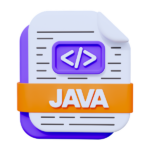Modern Project Management Models In the dynamic world of project management, traditional methodologies are increasingly being complemented—and even replaced—by more flexible frameworks like Agile, Scrum, and Kanban.
These models provide the adaptability and responsiveness necessary to meet the fast-paced demands of today’s projects, especially in software development.
The Rational Unified Process (RUP) One of the prominent iterative methods is the Rational Unified Process (RUP). RUP is a structured framework that divides a project into four essential phases: inception, elaboration, construction, and transition.
1. Inception: Defining the project’s scope and purpose.
2. Elaboration: Analyzing needs and establishing a solid architecture.
3. Construction: In this phase, the actual development and coding occur.
4. Transition: Deploying the completed system and ensuring it meets user needs. A significant feature of RUP is its use of a library or portfolio of past projects, helping teams improve efficiency in current projects based on lessons learned from previous developments.
The Scrum Framework Contrasting RUP, Scrum is an Agile framework designed to be flexible and customer-focused. Scrum relies on iterative cycles called sprints, each lasting between 2 to 4 weeks. This methodology emphasizes teamwork, collaboration, and continuous feedback, making it ideal for projects where requirements are expected to evolve. Key characteristics of Scrum include: –
Interactive Processes: Continuous interaction among team members supports dynamic product development.
Regular Feedback: Periodic demos allow stakeholders to provide real-time input, ensuring the product aligns with customer needs. Scrum thrives on adaptability, making it perfect for projects that necessitate frequent adjustments based on client feedback.
The Kanban Approach
Another effective Agile methodology is Kanban, which focuses on specific tasks rather than an entire project plan. With Kanban, teams work on a limited number of tasks at any given time, promoting efficiency and preventing overload. Key features include:
Visual Workflow: A visual board showcases the status of tasks, enhancing transparency and communication.
Continuous Delivery: Kanban supports ongoing releases and updates, allowing teams to deliver value consistently without the constraints of traditional backlog management.
Traditional Project Management
In contrast to the adaptive nature of Agile frameworks, traditional project management—often referred to as the Waterfall model follows a linear and sequential approach.
This method is suitable for projects with well-defined requirements but lacks the flexibility needed for rapidly changing environments. Key aspects of traditional project management include:
Sequential Phases: Each phase (initiation, planning, execution, monitoring, and closure) must be completed before moving to the next.
Minimal Client Involvement: Customer input is typically limited to initial requirements gathering and final delivery stages, leading to potential misalignments with stakeholder expectations.
Agile vs. Traditional Methodologies
| Aspect | Agile Method | Traditional Method |
| Structure | Iterative and incremental | Linear and sequential |
| Flexibility | Very flexible | Low flexibility |
| Customer Involvement | Continuous involvement | Minimal involvement |
| Deliverables | Incremental delivery | Final deliverables at project end |
| Documentation | Evolving documentation | Highly documented |
In summary, Agile methodologies like Scrum and Kanban prioritize adaptability and customer collaboration, making them better suited for small to medium projects where requirements frequently change. On the other hand, traditional project management is ideal for larger projects with well-defined goals that are unlikely to evolve. As organizations seek to navigate an increasingly complex project landscape, understanding these methodologies can empower teams to choose the right approach that aligns with their project needs and enhances overall efficiency and success.
Embracing Agile’s iterative nature while appreciating traditional methodologies’ structure can ultimately lead to more successful project outcomes.



